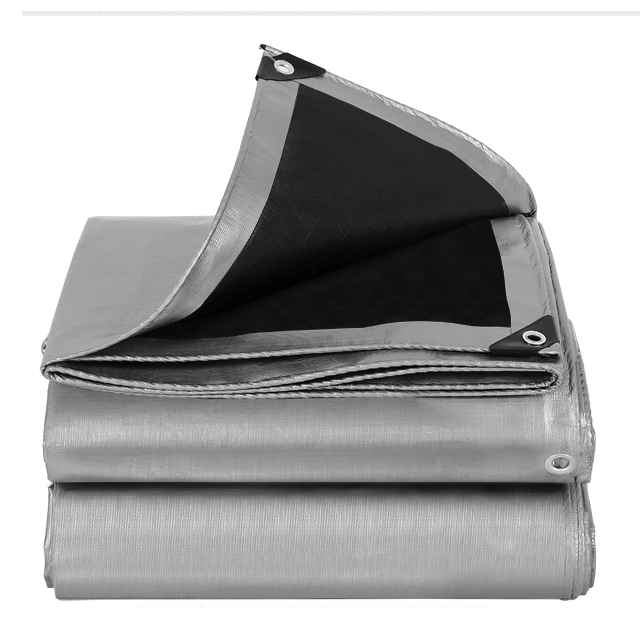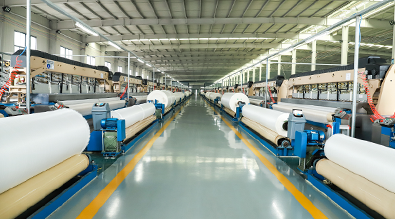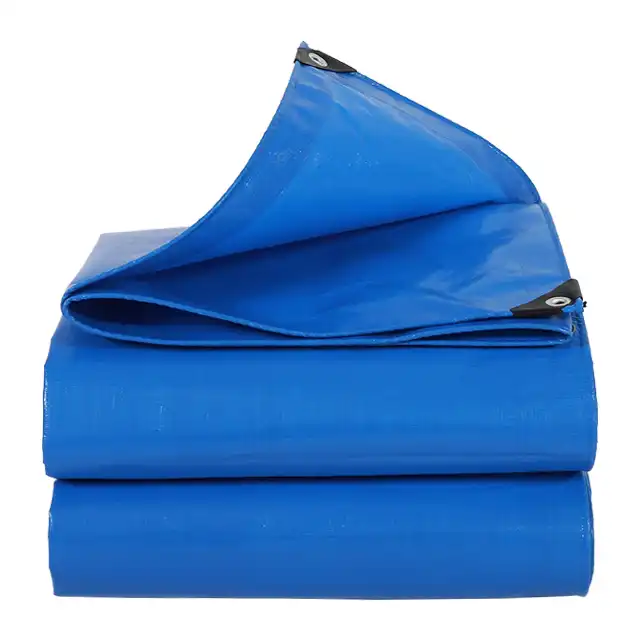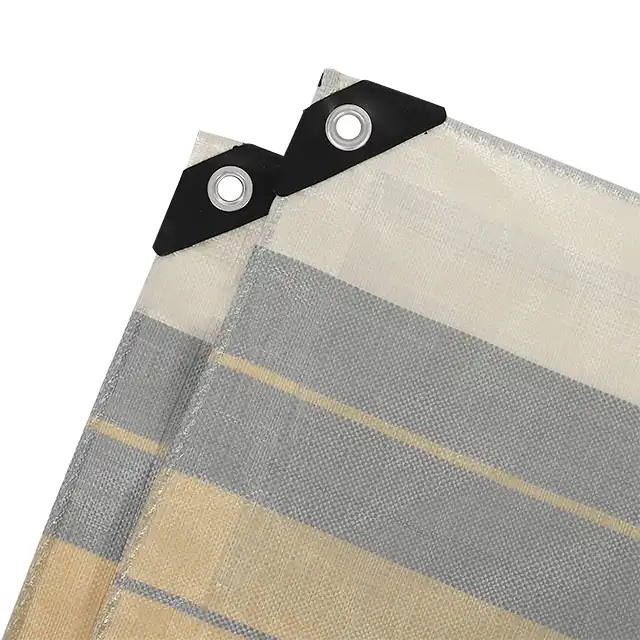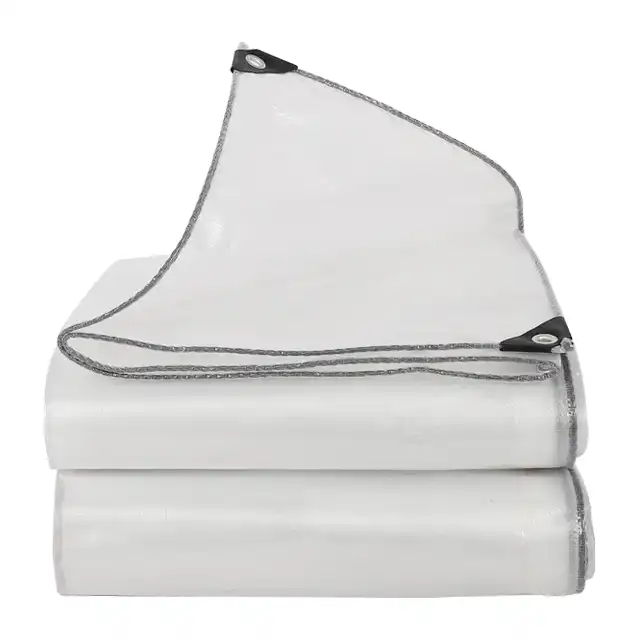Best Practices for Using Tarpaulins in the Transportation Industry
Picture this scenario: a truck loaded with valuable cargo encounters unexpected rainfall during a long-haul journey, resulting in thousands of dollars in damaged goods and delayed deliveries. This pain point faced by countless transportation companies worldwide underscores the critical importance of implementing proper transportation tarpaulin solutions. Understanding and applying best practices for using tarpaulins in the transportation industry is essential for protecting cargo, ensuring regulatory compliance, and maintaining operational efficiency across all modes of freight transport.
Selecting the Right Transportation Tarpaulin for Your Fleet Operations
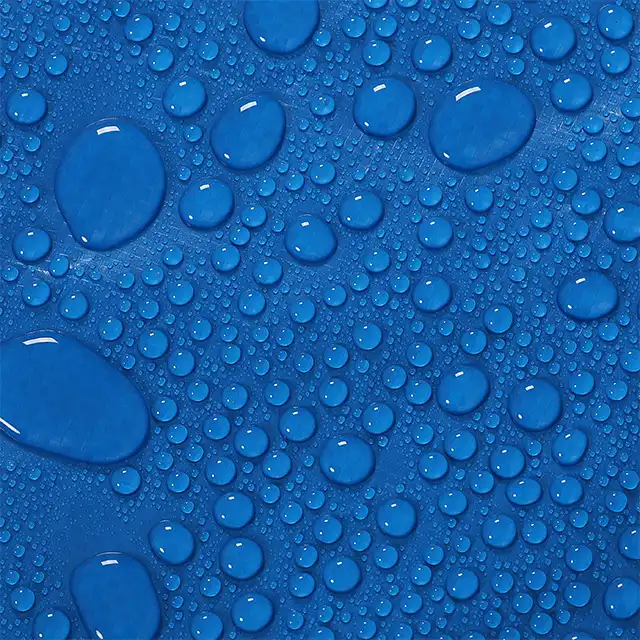
Choosing the appropriate transportation tarpaulin begins with understanding the specific demands of your cargo and operating environment. The material composition plays a crucial role in determining performance characteristics, with high-density polyethylene (HDPE) woven fabrics coated with low-density polyethylene (LDPE) offering superior durability and weather resistance. Modern transportation tarpaulin solutions feature tightly woven polyethylene fibers that provide exceptional tear resistance while maintaining lightweight properties essential for fuel efficiency and payload optimization. Weight specifications typically range from 65gsm to 280gsm, allowing fleet operators to match tarp strength with cargo requirements. Lighter weight options work effectively for general covering applications, while heavier duty transportation tarpaulin provides enhanced protection for valuable or sensitive freight. The coating process involves laminating both sides of the woven fabric, creating a waterproof barrier that prevents moisture infiltration while allowing flexibility in extreme temperatures. UV treatment levels ranging from 1% to 7% ensure extended service life even under constant sun exposure during long-distance hauling operations.
-
Material Technology and Construction Standards
Advanced transportation tarpaulin manufacturing utilizes high-strength yarns with denier ratings from 400D to 2500D, providing the tensile strength necessary for securing heavy loads. The weaving process employs mesh counts between 10x10 and 14x14, creating optimal balance between fabric strength and flexibility. Thickness specifications ranging from 7 to 12 mil accommodate different application requirements while maintaining consistent performance standards across varying environmental conditions. Professional-grade transportation tarpaulin incorporates anti-freezing properties that prevent material brittleness in sub-zero temperatures, ensuring reliable performance during winter operations. Shrink-proof construction maintains dimensional stability under thermal cycling, while anti-corrosion features protect against chemical exposure from road salts and industrial environments. These technical specifications contribute to Arctic flexibility that enables proper securing techniques even in extreme cold weather conditions.
Proper Installation and Securing Techniques for Transportation Tarpaulin
Effective transportation tarpaulin deployment requires systematic installation procedures that ensure complete cargo protection while maintaining regulatory compliance. Begin by inspecting the tarp for any damage, paying particular attention to grommets, reinforced edges, and potential wear points. Position the transportation tarpaulin to provide adequate overhang on all sides, typically extending 6-8 inches beyond the cargo perimeter to prevent wind uplift and water infiltration along edges. Securing techniques must account for load dynamics during transport, including acceleration, braking, and cornering forces that can stress tie-down points. Utilize appropriate hardware including bungee cords, ratchet straps, and D-rings to create multiple anchor points that distribute stress evenly across the tarp surface. Professional installation involves creating proper tension without over-stretching the material, which can lead to premature failure or reduced effectiveness. The securing pattern should eliminate flapping that creates aerodynamic drag and potential tarp damage.
-
Load-Specific Application Methods
Different cargo types require specialized transportation tarpaulin application approaches to maximize protection effectiveness. Flatbed operations benefit from side-roll systems that facilitate rapid deployment while ensuring complete coverage. Container applications may utilize fitted covers designed to specific dimensions, reducing installation time while improving weather sealing. Bulk materials require careful attention to load contours, using adjustable tensioning systems to accommodate settling during transport. Temperature-sensitive cargo demands transportation tarpaulin with enhanced insulation properties and reflective coatings that minimize heat transfer. Chemical products necessitate specialized materials that resist corrosion and provide containment capabilities in case of minor spills. Construction materials benefit from heavy-duty options with reinforced stress points that withstand the sharp edges and irregular shapes common in building supplies transport.
Compliance and Safety Requirements in Transportation Tarpaulin Usage
Regulatory compliance represents a fundamental aspect of transportation tarpaulin implementation, with federal and state regulations mandating cargo securement standards for commercial vehicles. The Federal Motor Carrier Safety Administration (FMCSA) establishes specific requirements for covering materials, tie-down ratios, and working load limits that directly impact tarp selection and usage protocols. Understanding these regulations helps fleet operators avoid costly violations while ensuring road safety for all users. Safety requirements extend beyond basic covering obligations to include proper visibility marking, securement redundancy, and driver training protocols. Transportation tarpaulin systems must accommodate required placarding for hazardous materials while maintaining emergency access points for inspection purposes. Regular inspection schedules help identify wear patterns and potential failure points before they compromise cargo security or create road hazards from debris.
-
Documentation and Training Standards
Comprehensive training programs ensure drivers understand proper transportation tarpaulin deployment techniques and safety procedures. Documentation requirements include pre-trip inspections, securement verification, and post-trip condition assessments that create accountability trails for cargo protection. Standard operating procedures should address weather-specific protocols, emergency procedures, and troubleshooting common installation challenges. Quality assurance protocols involve regular audits of tarp condition, securement hardware integrity, and driver compliance with established procedures. Fleet managers benefit from establishing replacement schedules based on usage patterns and environmental exposure rather than waiting for failure incidents. Preventive maintenance programs extend transportation tarpaulin service life while reducing unexpected replacement costs and potential cargo damage claims.
Weather Protection and Environmental Considerations
Environmental protection capabilities represent the primary value proposition of transportation tarpaulin systems, with weather resistance being the most critical performance characteristic. Effective weather protection requires understanding how different environmental conditions affect both the cargo and the protective covering itself. Waterproof construction prevents moisture infiltration that can damage sensitive materials, while UV treatment protects against solar degradation of both the tarp and underlying freight. Wind resistance becomes particularly important during high-speed highway operations, where aerodynamic forces can stress securement systems beyond design limits. Proper transportation tarpaulin selection considers wind load calculations based on vehicle speed, tarp surface area, and environmental conditions. Thermal cycling from daily temperature variations requires materials with sufficient flexibility to prevent cracking while maintaining dimensional stability under expansion and contraction cycles.
-
Specialized Environmental Applications
Desert operations demand transportation tarpaulin with enhanced UV resistance and reflective properties that minimize heat buildup and solar degradation. Coastal environments require corrosion-resistant hardware and salt-water tolerance that prevents premature deterioration of securing systems. Mountain operations necessitate materials that perform reliably across wide temperature ranges while resisting snow and ice accumulation. Industrial environments may expose transportation tarpaulin to chemical vapors, abrasive particles, and temperature extremes that exceed normal operating parameters. Specialized coatings and fabric treatments provide enhanced resistance to these challenging conditions while maintaining standard performance characteristics. Custom solutions may incorporate additional features such as static dissipation for electronics transport or food-grade materials for agricultural applications.
Maintenance and Longevity Best Practices for Transportation Tarpaulin
Maximizing transportation tarpaulin service life requires systematic maintenance practices that address both preventive care and corrective actions. Regular cleaning removes accumulated debris, road grime, and chemical residues that can accelerate material degradation. Proper storage techniques protect tarps from unnecessary UV exposure, mechanical damage, and contamination during periods of non-use. Folding procedures should minimize creasing that can create stress concentration points leading to premature failure. Inspection protocols identify developing issues before they compromise cargo protection or create safety hazards. Visual examination focuses on seam integrity, grommet condition, and surface wear patterns that indicate potential failure modes. Repair procedures using appropriate patching materials and techniques can extend service life significantly when applied promptly to minor damage. Replacement criteria should consider overall condition, repair history, and performance requirements rather than simply waiting for catastrophic failure.
-
Cost-Effective Lifecycle Management
Economic optimization of transportation tarpaulin operations involves balancing initial investment, maintenance costs, and replacement timing to minimize total cost of ownership. Higher-quality materials typically provide better long-term value through extended service life and reduced maintenance requirements. Standardizing on specific sizes and specifications enables bulk purchasing advantages while simplifying inventory management and driver training requirements. Performance tracking systems help identify optimal replacement intervals based on actual usage patterns rather than theoretical estimates. Data collection on tarp condition, repair frequency, and failure modes provides insights for improving selection criteria and maintenance procedures. Fleet-specific analysis may reveal environmental factors or operational practices that significantly impact tarp longevity, enabling targeted improvements in procurement and usage protocols.
Conclusion
Implementing best practices for using tarpaulins in the transportation industry requires a comprehensive approach encompassing proper selection, installation, compliance, environmental protection, and maintenance considerations. Success depends on understanding the specific requirements of your cargo, operating environment, and regulatory obligations while selecting appropriate transportation tarpaulin solutions that provide reliable performance and cost-effective operation throughout their service life.
Cooperate with Linyi Shengde Plastic Co., Ltd.
As a leading China transportation tarpaulin manufacturer with over 20 years of industry experience, Linyi Shengde Plastic Co., Ltd. offers comprehensive solutions for transportation industry needs. Established in 2003 with registered capital of RMB 60 Million and covering 60,000 square meters, our company has built a reputation as a trusted China transportation tarpaulin supplier through partnerships with international organizations including UNHCR, IOM, ICRC, and UNICEF.
Our advanced manufacturing capabilities include 30+ high-tech extruding machines, 400+ Korea-imported automatic water-jet looms, and 4 large fabric coating machines operated by professional technicians. With 1000+ well-trained workers ensuring 100+ tons daily output capacity, we serve as your reliable China transportation tarpaulin factory for consistent supply chain support. Our ISO 9001:2015 certification and excellent third-party testing results demonstrate our commitment to quality management throughout the entire production process.
Our research and development team continuously innovates to meet evolving market demands, developing ultra-wide width braiding machines, 4-meter width tarpaulin products, fire prevention functions, and enhanced waterproof capabilities. As a leading China transportation tarpaulin wholesale provider, we offer customized solutions with weights ranging from 65gsm to 280gsm, mesh counts from 10x10 to 14x14, and UV treatment levels from 1% to 7%. Our High Quality transportation tarpaulin products feature 100% waterproof construction, tear resistance, and arctic flexibility for reliable performance across diverse applications.
With transportation tarpaulin for sale to over 30 countries and competitive transportation tarpaulin price structures, we provide the quality, service, and value your operations demand. Contact us at info@shengdetarp.com for customized solutions that meet your specific transportation protection requirements and experience the Shengde difference in your cargo protection operations.
FAQ
Q: What weight specification should I choose for my transportation tarpaulin application?
A: Weight selection depends on your cargo type and environmental exposure, with 100-180gsm suitable for standard applications and 200-280gsm recommended for heavy-duty or harsh environment operations.
Q: How often should transportation tarpaulin be replaced in commercial fleet operations?
A: Replacement intervals typically range from 12-36 months based on usage frequency, environmental conditions, and maintenance quality, with regular inspection helping determine optimal timing.
Q: What are the key compliance requirements for transportation tarpaulin in commercial hauling?
A: FMCSA regulations require proper securement ratios, adequate working load limits, and appropriate covering for materials that could become road hazards, with specific requirements varying by cargo type.
Q: Can transportation tarpaulin be repaired, and what methods are most effective?
A: Minor tears and holes can be effectively repaired using appropriate patching materials and heat-sealing techniques, though repairs should be performed by qualified personnel to ensure reliability.
References
1. "Commercial Vehicle Cargo Securement Guidelines" - Federal Motor Carrier Safety Administration, Department of Transportation
2. "Protective Covering Systems for Transportation Applications" - Smith, Robert J., Journal of Transportation Engineering
3. "Materials and Methods in Industrial Tarpaulin Manufacturing" - Chen, Wei-Ming, International Textiles Research Institute
4. "Fleet Safety and Cargo Protection Best Practices Manual" - Transportation Safety Council, American Trucking Association
